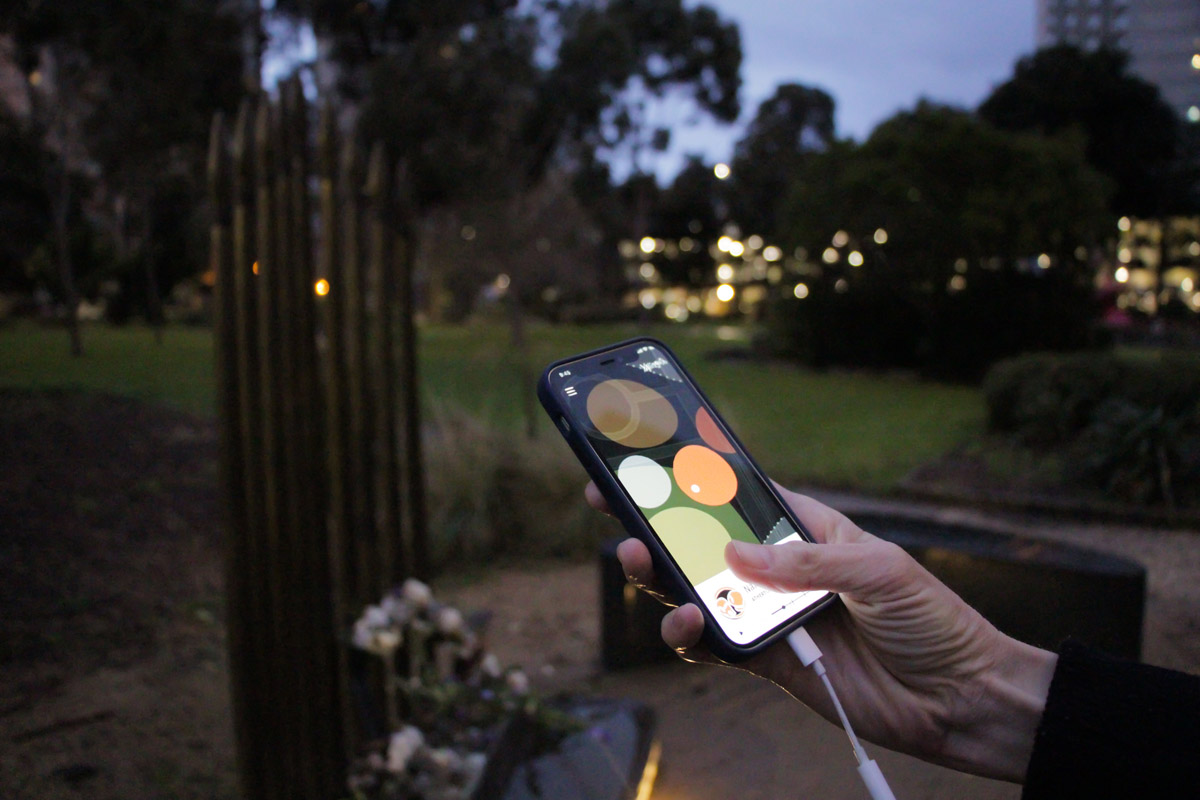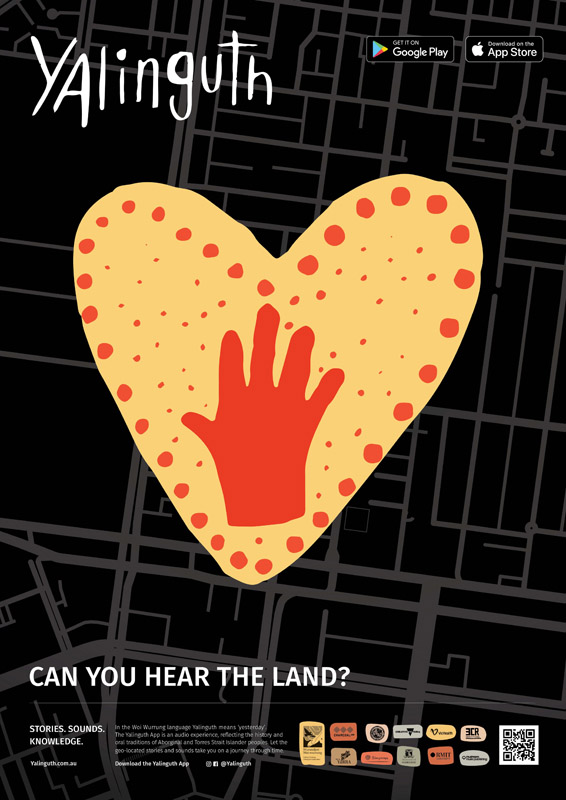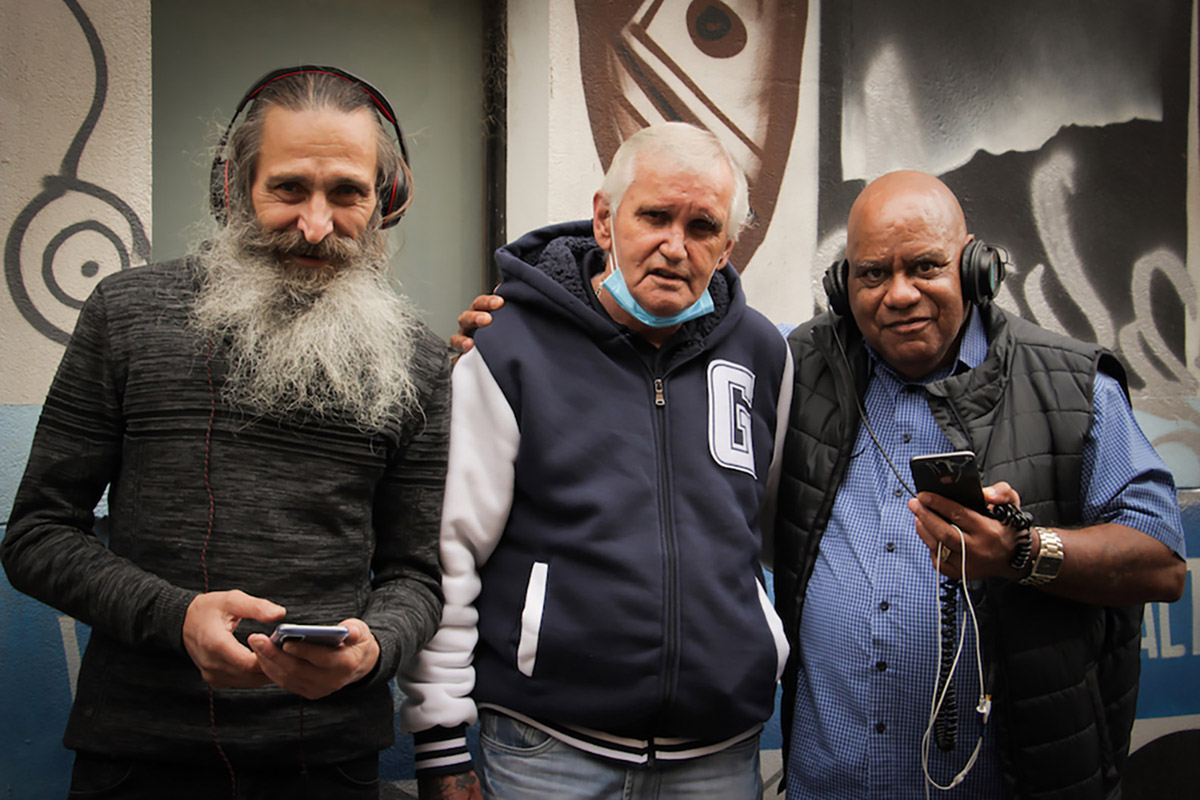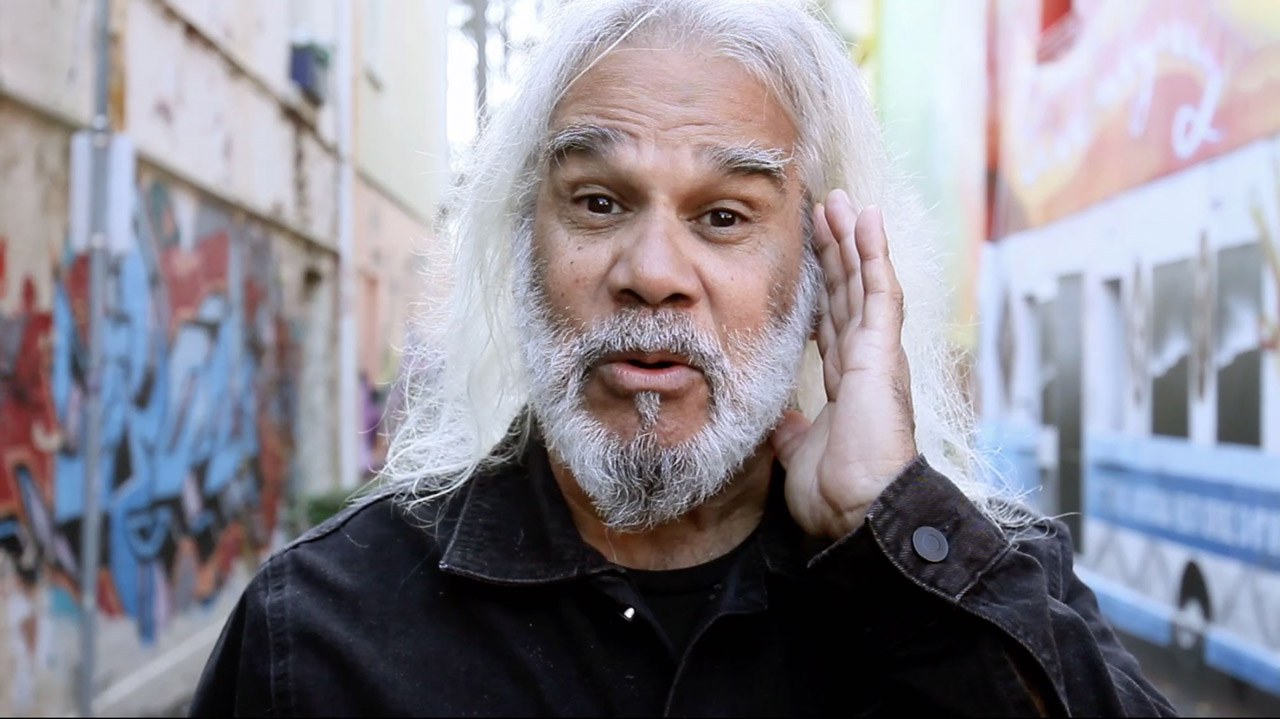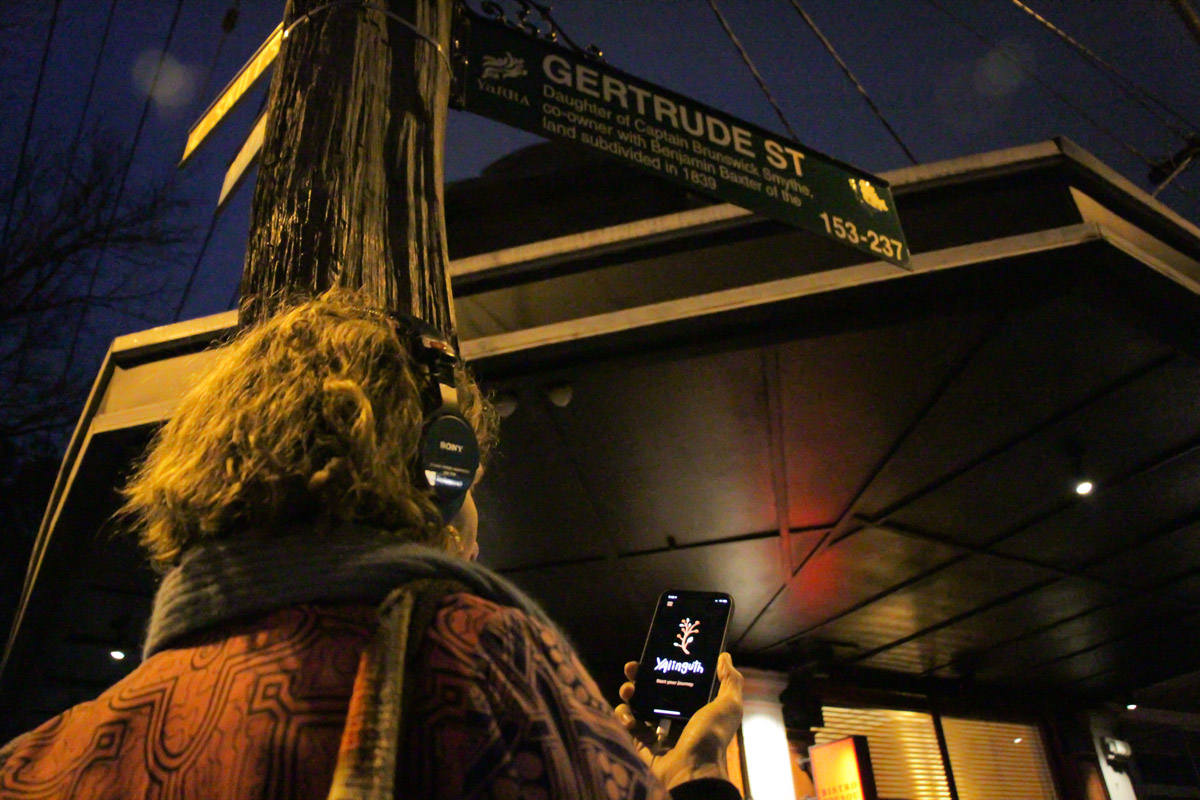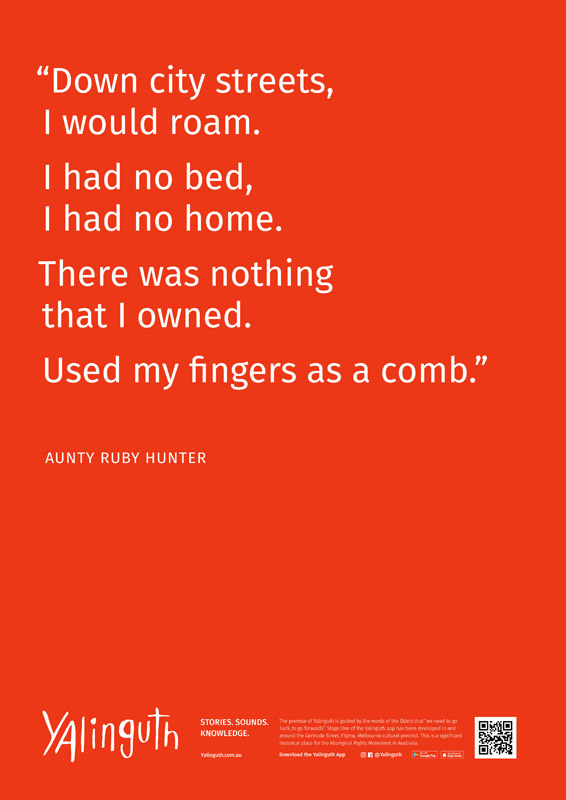Yalinguth is an example of a collaborative design process. The iterative cycles of ideation, development and testing that shaped the project were reliant on responses and contributions from a very broad community in collaboration with the producers, designers and developers. This methodology gave offered time and space to deeply engage with the community, stakeholders, developers and designers in an discussion as the work progressed.
Our collaborative design process was primarily a process of engagement. Overseen by a working group of Elders, the design was given both time and space to evolve as the work gathered essential funds, sponsors, community support and engagement. Our story gathering days were often emotionally deep, raw and rich events. Early prototypes were shared and critiqued, talked out, sat with, and iterated, enabling a engagement with the design process that truly acknowledged the ownership and self-representation of Aboriginal and Torres Strait Islander histories.
Collaborative Design offers the benefits of flat hierarchies, where benefits flow in unanticipated, or unexpected directions. Non-indigenous team members reported increased cultural competencies, and a sense of gratitude in being welcomed into the community enabled by the process.
The implementation of the design underscores the value and importance of each individual's story - a principle that was carried through the whole design process. The final interface mirrors maps of Aboriginal and Torres Strait Islander language. Up close a singular story offers uniqueness and specificity, while from a distance the collection underscores the cumulative power of a community speaking as one.
The brief has been met, and the design process paved the way for the software to become much more robust as it became clear that Yalinguth could, and has significant support to, extend its reach and breadth across hundreds if different locations across all of Australia.


